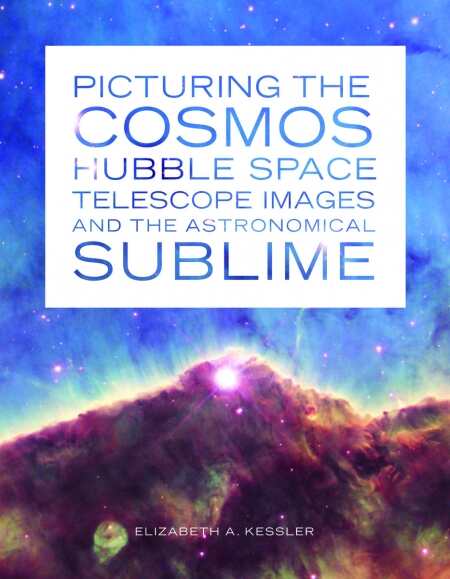Picturing the Cosmos
Hubble Space Telescope Images and the Astronomical Sublime
Many astronomers and physicists have labeled the production of images from the Hubble Space Telescope as “pretty pictures … little better than a diversion,” since they “cannot be used as sufficient evidence to make claims about the physical makeup of the cosmos.” So why has the telescope remained so popular on the astronomy scene?
Aesthetics and science undoubtedly have a tense relationship, but according to Elizabeth Kessler’s Picturing the Cosmos, the telescope’s images do more than appeal to the artistic eye: they offer a presentation of how the universe may appear to the prospective space traveler. The photographs are not the telescope’s only function either: It records data collected from space, helping scientists piece together the composition of nebulae and other planets, calculate the distance of these objects from Earth, and measure new galaxies, stars, and other cosmological phenomenon.
The four comprehensive chapters—and lengthy introduction—are each charged with a massive task, beginning with “The Astronomical Sublime and the American West,” which compares the cosmic pictures to paintings of epic western landscapes. According to Kessler, the uninhabited, mountainous West, in brown and yellow tones, mirrors the expanse of various nebulae, “[participating] in the rhetoric of Manifest Destiny.” The second chapter is dedicated to the history of the telescope’s technology, and the third presents the process of turning the data into images and the important decisions scientists must make concerning color—the Hubble only provides images in black and white, though it does document wavelengths of light to aid in the analysis of color. The fourth and final chapter, “From Unknown Frontiers to Familiar Places,” delves into the symbolism of the pictures’ similarities to our terrestrial surroundings, “a relationship acknowledged and even encouraged by the astronomers who craft the Hubble images.” Drawing on art history and the history of American exploration, Kessler illuminates the cultural significance of the Hubble Telescope images and analyzes how they affect our perception of the cosmos.
Some technological jargon may confuse readers unfamiliar with cosmology, but for amateur astronomers and art history buffs, Picturing the Cosmos is a fascinating read. Though the writing is occasionally repetitive, Kessler’s mission in this book is satisfied. She asserts the ambivalence of scientists’ opinions of the images and the comparison to the American West repeatedly, though she usually adds to those assertions new information to strengthen her position. Together with the text, the numinous Hubble images and paintings of the West enchant her audience, supporting Kessler’s claims and indicating her extensive research.
Picturing the Cosmos brings a new angle to the images of space captured by the Hubble, analyzing them as ranking with other romantic landscapes. Though NASA’s sole purpose was to photograph the cosmos, these “pretty pictures” have become works of art in their own right. “They remind us—as insignificant as we may be,” Kessler concludes, “of the potential to go beyond that which may at first seem to limit us.”
Elizabeth Kessler is a professor of art history at Stanford University and has received a fellowship from the Smithsonian Institution National Air and Space Museum.
Reviewed by
Aimee Jodoin
Disclosure: This article is not an endorsement, but a review. The publisher of this book provided free copies of the book to have their book reviewed by a professional reviewer. No fee was paid by the publisher for this review. Foreword Reviews only recommends books that we love. Foreword Magazine, Inc. is disclosing this in accordance with the Federal Trade Commission’s 16 CFR, Part 255.

